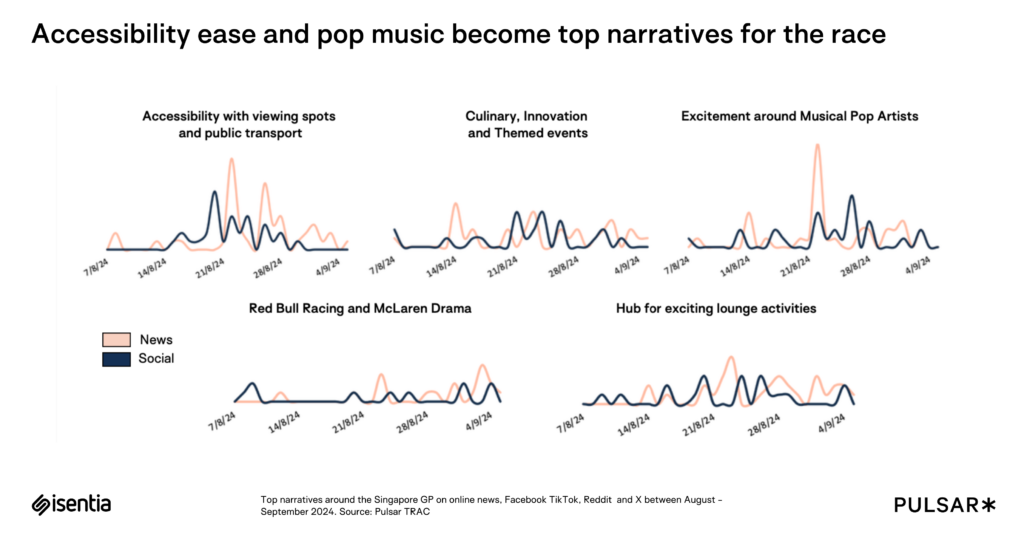Blog
The fundamentals of stakeholder strategy
A practical guide to tailored stakeholder management, offering strategies and tools to identify, map, and nurture relationships.
Singapore has cemented its place as a hub for global events, with the Formula 1 Singapore Grand Prix lend to the city-state’s global brand. This blog delves into how these narratives shape Singapore’s reputation, highlighting the seamless integration of culture, technology, and entertainment into its global outreach.
The Singapore Grand Prix 2024 once again captures the globe’s attention, with discussions on its accessibility, entertainment lineups, and culinary offerings taking center stage. Key narratives revolved around pop music performances and the excitement of the Red Bull-McLaren rivalry, which added drama to the race’s buildup. This event continues to redefine motor racing as more than just a sport, appealing to younger, diverse audiences through its immersive cultural and social experiences.

Meanwhile, the Singapore remains a case study in strategic communication. Themes of modernity, innovation, and inclusivity dominate the narrative, aligning with Singapore’s image as a forward-thinking city-state. Events like the Singapore Grand Prix amplify this reputation by showcasing the nation’s capabilities in hosting globally significant events.

Accessibility and convenience remain hallmarks of the Grand Prix, with efficient public transport systems and thoughtfully planned road closures garnering praise. These elements align with Singapore’s broader focus on urban excellence, reinforcing its status as a world-class city that excels in organization and robust infrastructure.
The lineup for the Grand Prix stood out, attracting younger demographics with acts like BabyMonster and Jared Leto’s Thirty Seconds to Mars. This complements the region’s growing appetite for integrating pop culture into large-scale events, a strategy that resonates across Southeast Asia’s youthful, digitally connected audiences.

From Michelin-star culinary offerings to tech-forward experiences like Token2049, the Grand Prix seamlessly combines high-octane sports with lifestyle elements. These integrations not only elevate the event’s appeal but also contribute significantly to Singapore’s tourism and economic revenue that the government lays focus on every year.

The Singapore Grand Prix and the government’s efforts to maintain the global image of the city-state demonstrate the region’s ability to harmonize tradition with modernity. Through strategic partnerships, and cultural inclusivity, Singapore continues to set benchmarks for global engagement and regional leadership.
Want to catch up to our latest insights and reports? Contact nikita.gundala@isentia.com to learn more.
A practical guide to tailored stakeholder management, offering strategies and tools to identify, map, and nurture relationships.
Across the communications landscape, teams are being asked to do more with less, while staying aligned, responsive and compliant in the face of complex and often shifting stakeholder demands. In that environment, how we track, report and manage our relationships really matters. In too many organisations, relationship management is still built around tools designed for […]
Get in touch or request a demo.